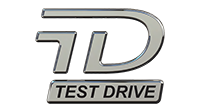Flatbed trucking for heavy equipment is a critical element of today’s industrial supply chain. Logistics managers and procurement teams need to understand how to partner with a freight broker that offers transparency, stability and asset-based expertise.
Why flatbed trucking matters for heavy equipment
Heavy equipment—excavators, turbines, large industrial generators—often exceeds the size or weight limits of standard enclosed trailers. Conventional dry van or reefer services typically will not suffice. The open-deck design of flatbed trailers allows loading from the sides or above, critical for oversized or irregular cargo.
For example, a manufacturing plant ships a 40-ton excavator from Oklahoma to a heavy-haul yard in Colorado. A standard trailer would require breakdown into parts; a step-deck flatbed enables direct transport.
Flatbed freight becomes a strategic advantage when your cargo is large, heavy or irregular.
What qualifies as heavy equipment and oversized loads
Heavy equipment loads may weigh 30,000 lbs or more and can exceed 8.5 ft wide or 13.5 ft tall. When you exceed standard dimensions you enter “oversize load” territory and require permits, escorts or specialized trailers.
Trailer selection matters: step-deck, double-drop or RGN (removable gooseneck) configurations are common for heavy machinery.
Why flatbed trailers are the preferred mode
Unlike enclosed trailers, flatbed trucks offer rapid loading/unloading flexibility and can adapt to bulky or non-standard shapes.
A heavy-haul carrier may use a 53-ft extendable deck for a 70-ft wind turbine blade. Flatbed trucking is indispensable in construction, energy and manufacturing sectors.
Key challenges when hauling heavy equipment
Moving heavy equipment on flatbeds demands more than just a truck. Several critical factors must be addressed.
Permitting, route planning & regulators
Large, heavy or over-dimensional loads may require state or interstate permits, pilot car escorts, and restrictions on travelling hours or roads.
For instance a shipment from Georgia to Florida may require bridge formula calculations, route approval and overnight staging. Without planning these causes delays and cost overruns.
Load securement, trailer type and equipment selection
Proper tie-downs, chains, edge protectors, tarping and dunnage are fundamental. A change in trailer type (e.g., from step-deck to double-drop) or poor securement may lead to shifting freight, damage or compensation claims.
Example: A 55,000 lb generator loaded onto a standard flatbed rather than an RGN may exceed height clearance and cause re-routing.
Hidden costs: accessorials, delays, detention
Heavy oversize loads tend to come with extra accessorial charges: escort vehicles, night travel, pilot cars, overweight fees, waiting time at loading/unloading. Some brokers bury these costs.
At a transparent freight broker you will see a clear breakdown of these accessorials and the margin your broker applies. This reduces surprises.
How shippers should evaluate a freight broker for flatbed heavy equipment
Choosing the right trucking broker can be the difference between on-time, damage-free delivery and reactive firefighting.
Transparent freight rates and the low fixed margin model
Many brokers mark up carrier rates and keep the spread. At a transparent broker you see the carrier’s rate plus a fixed margin—so you know exactly what the truck earns.
Quote: “Low fixed margin removes the incentive to play the spread.”
This model aligns incentives and simplifies cost discussions.
Carrier name disclosure and asset fleet vetting
When a broker shares the actual carrier name and trailer configuration you gain visibility and accountability.
Quote: “We disclose carrier names and rates so shippers see the full picture.”
Your logistics team can check DOT authority, insurance, safety rating and trailer type. A vetted asset-based fleet means less risk of rejected loads, equipment mismatches or sub-par service.
Contract vs spot pricing, dedicated lanes and stability
For heavy equipment shipments you want predictability. A contract rate for a dedicated lane enables better cost planning and carrier commitment. Spot pricing is riskier and may lead to capacity issues or margin shocks.
Include questions like: Do we have a drop trailer at the site? Is the carrier committed to this lane?
Quote: “Test carriers on your lanes before you contract.”
Avoiding back solicitation and ensuring compliance
Ensure your agreement prohibits direct solicitation of the carrier by your shipper team. That protects your broker-carrier relationship and ensures continuity of service. Also confirm the carrier holds the correct DOT authority, COI, ELD compliance, and safety rating.
The 1fr8.broker difference for heavy equipment flatbed shipments
Here is how 1fr8.broker delivers value for flatbed heavy equipment.
How we select and vet asset-based flatbed carriers
We pre-qualify carriers based on trailer type (step-deck, double-drop, RGN), safety metrics (CSA scores), on-time delivery history, and equipment availability. This ensures your heavy-haul shipment has the right truck, crew and gear from the start.
How we build route guides, drop trailer programs and on-time delivery for heavy loads
For dedicated heavy equipment lanes we implement a drop trailer program near the shipper site or destination site, so equipment can be staged and loading time minimised. We report on KPIs such as on-time delivery, detention time and claims frequency.
For example: a manufacturer in Texas uses us weekly for 45,000 lb excavators into Oklahoma, with a dedicated trailer staged for loading and fixed margin pricing locked for six months.
Example lane scenario: heavy equipment haul from manufacturing plant to site
Shipper: Construction equipping firm moves a 50-ton crane from Ohio manufacturing plant to Pennsylvania project site.
We provide: a double-drop trailer, pilot car permitted route, full securement plan, fixed margin pricing, carrier name disclosure, on-site staging via drop trailer. Result: delivered under budget, no claims, full visibility.
Practical takeaways for logistics managers
Checklist before you sign with a flatbed freight broker
- Is the carrier name disclosed and can you check safety/insurance?
- Is the margin fixed and transparent?
- Are trailer types and equipment specified (step-deck, RGN, etc.)?
- Are accessorials clearly defined (escort, pilot, detention)?
- Is there a route guide, drop trailer program or dedicated lane offering?
- Is there compliance protection (no back solicitation, correct DOT/ELD/insurance)?
How to integrate accessorial transparency and KPI scorecards
Ask your broker for a monthly scorecard: carrier on-time delivery %, detention hours, claims per million freight dollars, and trailer utilization. This helps you build continuous improvement and better procurement negotiation.
Quote: “Flatbed heavy equipment requires the right trailer type, route plan and carrier expertise.”
At One Freight Broker, we are committed to helping you navigate the complexities of PTL and LTL national shipping. Whether you’re a small or medium-sized business, our tailored solutions are designed to meet your specific shipping needs efficiently and cost-effectively. Contact us at 800.716.7608 for expert guidance and to ensure your shipments reach their destination safely and on time.
Contact Us Today
Ready to simplify your shipping experience? Contact One Freight Broker to discover how our expertise can benefit your business, ensuring your cargo is in safe hands every step of the way.
To request a transparent quote or learn more, visit [Request a Quote].


